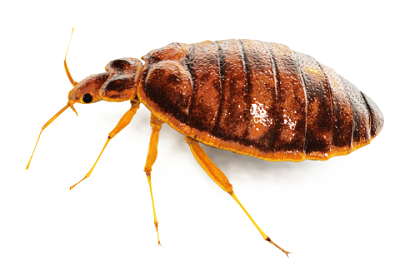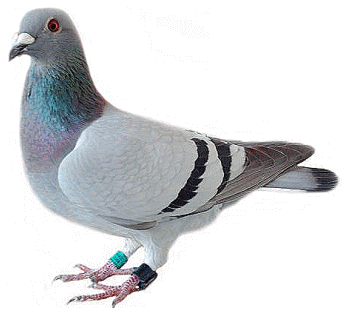Bed bugs are a blood sucking parasites that have been around since humans lived in caves.
With the increase in travel, the use of hotels, Air BnBs & Hostels, the sale of second hand furniture etc, we can all be at risk from an unwanted infestation.
Bed bugs not only affect homes and businesses, they can also impact on sleep quality & mental health too.
How do bed bug infestations spread?
Bed bugs are a pain and know for being able to spread in a variety of different ways. Understanding the ways in which they spread for preventing future infestations.
- Travel: Bed bugs are notoriously good hitchhikers and can easily be transported from one place to another accidentally. They often hide in luggage, clothing, and other personal belongings when you travel.
- Used furniture: Bringing used furniture or mattresses into your home without proper inspection and cleaning.
- Guests and visitors: If someone with a bed bug infestation in their home visits your property, they may inadvertently bring bed bugs with them. Crawling into their belongings and transfer to your furniture or clothing.
- Shared laundry facilities: Using communal laundry facilities, where people from different households wash their clothes, can provide an easy opportunity for bed bugs to spread.
- Neighboring infestations: If your neighbors have a bed bug problem, these pests can easily migrate to your home through wall voids, sockets, or plumbing. They are known to travel through apartments & blocks of flats with ease.
- Used or rented equipment: Renting or borrowing items like appliances, electronic devices, or medical equipment that have been in infested homes can also lead to the introduction of bed bugs.
- Infested surroundings: Bed bugs can infest various locations, to name a few: BnB’s, hotels, dorms, hostels and public transportation.
- Clothing, backpacks and luggage: Bed bugs can easily hitch a ride in clothing, backpacks or other personal belongings. Regularly inspect your clothing after returning from areas where bed bugs may be present and ensure items of clothing are thoroughly washed at 60 degrees.
Where do bed bugs live?
Bed bugs can be found in many different locations and not just in hotels / homes. A few examples include: mattresses, upholstered furniture, wall and floor cracks, luggage, clothing, and electrical outlets. They will try to seek shelter close to their hosts to easily access blood meals.
Their obvious preference for hiding spots is near areas where people sleep or sit for long periods. This makes bedrooms and living rooms common infestation sites.
In short, you may find them anywhere they feel safe that is close to a host which allows them to have frequent meals!
How to find bed bugs & what are the signs?
Finding bed bugs and recognising the warning signs is crucial for early detection and helps treatment be more effective. Here’s how to find bed bugs and what signs to look for:
Visual Inspection:
- Examine your bedding, especially the seams and folds of mattresses and box springs.
- Check the crevices, joints, and cracks of bed frames and headboards.
- Inspect upholstered furniture, paying close attention to seams, cushions, and under the fabric.
- Look at baseboards, moldings, and behind wallpaper, if applicable.
- Fecal stains, bed bugs excrete digested blood, leaving small dark brown / black spots on bedding.
- Blood smears, bed bugs are often crushed while feeding which leaves behind reddish-brown smears on bedding.
Bed Bug Bites:
- Bed bug bites appear as itchy, red welts on the skin.
- These bites are commonly found on exposed areas of the body, such as the face, neck, arms, and hands.
Other Signs of Infestation:
- Eggs, bed bugs lay tiny oval-shaped white eggs. These are often in clusters glued near to feeding sites.
- Shedding: Bed bugs go through multiple life stages and shed their exoskeletons as they grow. These discarded exoskeletons can be found near their hiding spots.
- Musty Odor: Some people report a sweet, musty odor in areas with a significant bed bug infestation. This scent is a combination of pheromones and the bugs’ secretions.
- Live Bed Bugs Sightings: If you find live bed bugs, it is best practice to have a pest control professional confirm that the bug found is a bed bug.
When conducting an inspection, use a flashlight to help identify signs in dark and hidden areas. It’s important to inspect not only your sleeping and sitting areas but also your luggage, clothing, and personal belongings, especially after returning from travel.
How to get rid of Bed Bugs?
If you suspect a bed bug infestation and have spotted the signs at your property, it is crucial to take immediate action to help halt the spread. Contact the team at ARK Pest Control to confirm the infestation and develop an effective treatment plan. Eliminating bed bugs can be challenging and often requires the assistance of industry professionals. DIY pest control is very rarely reliable or completely successful.
You can however attempt the below immediate steps:
- Chemicals should always be used with caution and administered by licensed professionals.
- Vacuum all wall/floor junctions and furnishings such as beds and curtains. Bed linen should be washed at 60*
- Thoroughly inspect all luggage and clothing regularly.
Conclusion
In summary, bed bugs are increasingly prevalent due to factors like travel and the use of second-hand furniture. They can spread through various means, including travel, used furniture, and visits from infested individuals.
Bed bugs hide in various locations, preferring areas near sleeping or sitting spots. To detect them, conduct visual inspections for signs like fecal stains, blood smears, and bed bug bites. Professional pest control is often necessary for complete elimination, as DIY methods can be unreliable.
If you suspect an infestation, contact experts like the team at ARK Pest Control.













